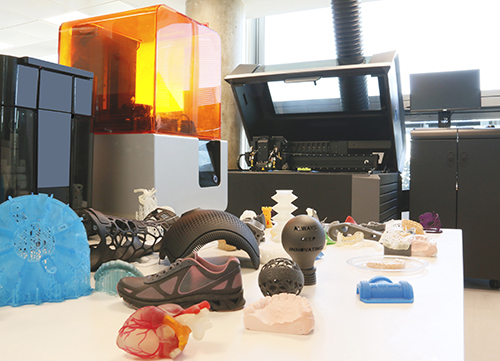Three-dimensional printing is stirring up all sectors. Virtually anything can be printed from a digital file and turned into a tangible object. More and more products are currently manufactured in this way.
This revolution will have an impact and will mean improvements in the world of logistics, specifically in the design of supply chains. The increased need to mass-customize some products and print-on-demand will reduce both a company's inventory and its warehouse, as manufacturing will be done on demand.
The importance of 3D printing companies partnering with logistics providers to manufacture parts ‘on demand’ is that it will reduce the cost of warehousing and delivery times.
The implications of this new manufacturing technology for the logistics industry will be highly relevant. These are some of the benefits:
-Decrease of shipping and air cargo volumes
Potentially, a part of the goods produced, say, in China or in other Asian markets could now be manufactured closer to America and Europe. This would reduce shipping and air cargo volumes.
- Decrease of inventory levels
Mass customization will provide an opportunity to reduce inventories as products will be made tailor made.
UPS is experimenting with this technology to improve geographic coverage for the growing demands of small businesses. The UPS Store, a pioneer in bringing this type of service closer to small businesses, offers this 3D printing service in more than 60 different locations. This initiative aims to simplify and improve every aspect of the supply chain, from manufacturing to digitization, certification and delivery. In doing so, they seek to reduce slow-moving parts inventories, cost-effective product customization, and accelerate delivery of high-quality prototypes for industrial designers and engineers.
- End customer distribution
Likewise, given the possibility of manufacturing on demand, each delivery can be ensured almost immediately. Customization and immediacy are the two consumer needs that we will be able to satisfy with this technology.
-New transport needs
The volume of sea, air and land transport will decrease in certain products, but will increase in others. The identity of the items transported will change. For example, raw materials related to 3D printing will surely need to be transported.
An example of the growing importance of 3D printing is the alliance between the Consorci de la Zona Franca (CZFB), HP and Leitat (Tecnio), together with CatSalut, through the Terrassa Health Consortium and the Parc Taulí Hospital in Sabadell, who have managed to develop the first 3D printed field respirator to produce it in industrial quantities prepared to give support to hospitals and ICUs in the treatment of seriously ill Covid-19patients.

